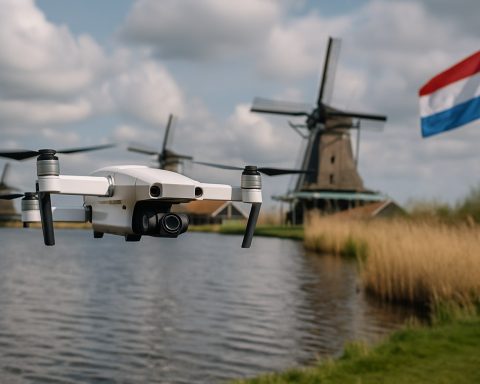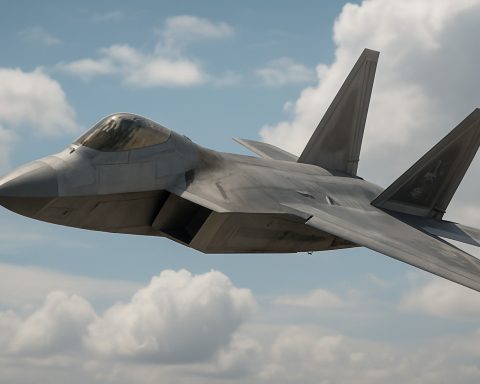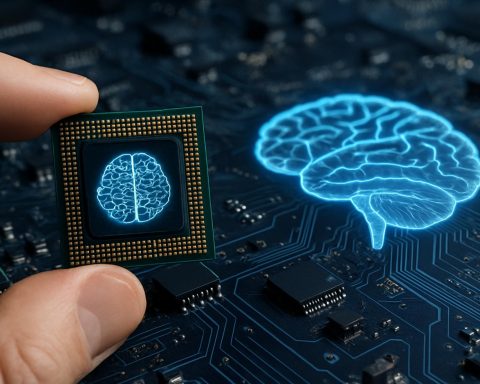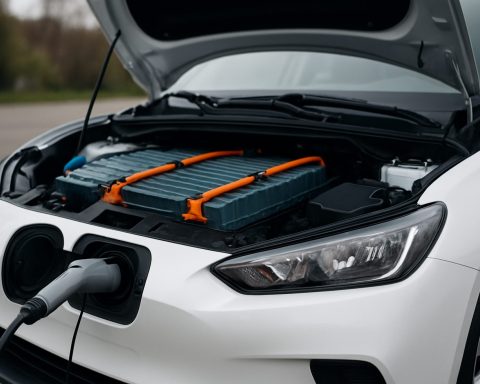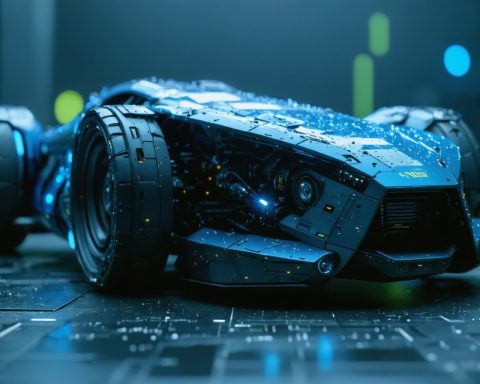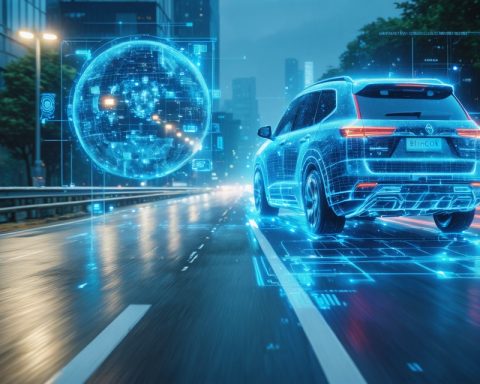- General Motors (GM) partners with Nvidia to integrate artificial intelligence into its operations and vehicles, aiming to lead future automotive innovation.
- Nvidia’s cutting-edge technology will enhance GM’s factory efficiency, advance autonomous vehicles, and improve driver-assistance systems.
- Announced at Nvidia’s GTC conference, the collaboration highlights autonomous driving’s near-term reality, powered by Nvidia’s DriveOS and AI processing expertise.
- GM plans to use Nvidia’s Omniverse for 3D simulations, enabling digital twin factories and improving robotics in manufacturing.
- Inside future GM vehicles, Nvidia’s Drive AGX system will enhance safety and functionality, supporting GM’s hands-free Super Cruise driving system.
- This collaboration aims for a transformative shift towards autonomous personal vehicles, leveraging GM’s and Nvidia’s combined innovation prowess.
- GM is incorporating its self-driving subsidiary, Cruise, with driver-assistance systems to further integrate AI into its products.
General Motors is steering its enterprise into the future by forging a powerful alliance with tech titan Nvidia. This burgeoning partnership promises to infuse artificial intelligence into every artery of the automaker’s operations—from factory floors to futuristic vehicles—leveraging Nvidia’s cutting-edge technology to sculpt the future of the automotive industry.
Unveiled at Nvidia’s GTC conference in the heart of Silicon Valley, this collaboration marks a turning point for both companies. Nvidia’s CEO, Jensen Huang, captured the momentum succinctly: the era of autonomous riding is no longer a far-flung fantasy but an imminent reality.
Imagine a world where cars think, speak, and adapt like humans, where automobile manufacturing plants pulsate with AI-driven efficiency. GM envisions this world becoming tangible with the help of Nvidia’s state-of-the-art GPUs and its revolutionary DriveOS platform. Nvidia, seasoned in automotive ventures with giants like Tesla and Waymo, brings experience and innovation to the drawing table, making real-time AI processing for self-driving cars and advanced driver-assistance systems a near certainty.
The gilded promise of this partnership isn’t just limited to evolving autonomous vehicles. GM plans to harness Nvidia’s Omniverse—a collaborative platform for 3D simulation—transforming physical plants into digital twin factories. Visualize digital replicas of assembly lines, humming with the dynamism of AI-driven improvements, all without the hiccup of interrupting current production. Robotics, already deftly handling tasks from welding to logistics within GM’s massive factories, stand to gain a quantum leap in precision and efficiency through advanced AI models.
Inside the vehicles of tomorrow, Nvidia’s Drive AGX system will power GM’s future fleet, delivering not just convenience but heightened safety. Picture a dashboard melding seamless design with self-learning algorithms that anticipate the driver’s next move, enhancing safety and confidence behind the wheel. This is not just evolutionary—it is transformative, setting the stage for GM’s hands-free driving system, Super Cruise, to become an industry standard.
As these technological titans merge vision and expertise, the unspoken potential hangs in the air: the full realization of autonomous personal vehicles. Moving beyond the cessation of its commercial robotaxi venture, GM is doubling down on integrating its self-driving subsidiary, Cruise, into a cohesive effort alongside its existing driver-assistance systems.
All eyes are on Detroit, where GM’s historic headquarters hum with anticipation of this AI revolution. As Nvidia provides the digital tools, GM is poised to craft a masterpiece—a new era of automotive innovation that’s not only imagined but inevitable. The road ahead, paved with silicon and intelligence, promises an exhilarating journey.
Revolutionary AI Partnership: How GM and Nvidia are Transforming the Automotive Industry
GM and Nvidia: A Strategic Alliance for Automotive Evolution
General Motors (GM) and Nvidia have embarked on a transformative journey, aiming to reshape the automotive industry by integrating artificial intelligence (AI) into every layer of operations. This partnership focuses on utilizing Nvidia’s advanced technology to enhance everything from vehicle manufacturing to the development of autonomous vehicles. Here, we delve deeper into the implications and broader context of this collaboration.
Key Features and Technologies
– Nvidia DriveOS and AGX Platform: These platforms will power GM’s upcoming vehicles with capabilities for real-time AI processing. This includes sophisticated driver-assistance systems and potential fully autonomous driving technologies.
– Omniverse and Digital Twins: Utilizing Nvidia’s Omniverse, GM plans to create digital replicas of its manufacturing plants. These “digital twins” allow for simulations that can enhance efficiency and innovation without disrupting production lines.
– Enhanced Safety Features: Nvidia’s technology enables self-learning algorithms in dashboards that predict driver behavior, potentially enhancing safety and offering a new level of driving assistance.
Real-World Use Cases
1. Improved Manufacturing Efficiency: Digital twin technology will allow GM to preemptively address factory issues, minimize downtime, and optimize resource allocation.
2. Advanced Autonomous Features: Nvidia’s Drive AGX will provide the computational power for GM’s hands-free driving systems, potentially making technologies like Super Cruise a standard feature.
3. AI-Driven Vehicle Adaptation: Vehicles equipped with Nvidia’s solutions could adapt to individual driver preferences, offering a personalized driving experience.
Industry Trends and Predictions
– Growth in Autonomous Vehicle Market: According to Allied Market Research, the autonomous vehicle market is projected to reach $556.67 billion by 2026. Partnerships like that of GM and Nvidia are pivotal drivers.
– Increased AI Integration in Automobiles: The trend towards connected, AI-driven vehicles is expected to accelerate, with major automakers investing in AI to gain competitive advantages.
Pros and Cons Overview
– Pros:
– Enhanced vehicle safety and driver convenience.
– Increased manufacturing efficiency and flexibility.
– Pioneering AI integration contributing to industry leadership.
– Cons:
– Potential high costs associated with new technology deployment.
– Regulatory challenges in the adoption of autonomous driving technologies.
– Consumer acceptance of AI-powered vehicles remains uncertain.
Controversies and Challenges
The rapid infusion of AI in automotive operations is not without challenges. Concerns around data privacy, potential software vulnerabilities, and the ethical implications of machine decision-making in autonomous vehicles continue to spark debate.
Actionable Recommendations for Consumers
– Stay Informed: Follow updates from GM and Nvidia to understand how these advancements might affect purchasing decisions and vehicle features.
– Consider Safety Features: When evaluating vehicle options, consider models equipped with advanced driver-assistance systems for enhanced safety.
– Explore Tech-Enabled Vehicles: If interested in AI-driven features, research vehicles already incorporating Nvidia technology for a glimpse into future capabilities.
Related Links
For more industry news and updates on AI technologies, visit the official websites of:
– General Motors
– Nvidia
By harnessing the power of AI through their partnership, GM and Nvidia are setting new industry standards that could redefine what consumers expect from the automotive industry. Whether you’re a tech enthusiast or a prospective car buyer, staying updated on these innovations is key to understanding the future of driving.


